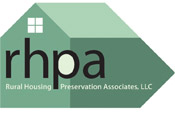
Rural Housing Preservation Associates, LLC
Rural Housing Preservation Associates, LLC (RHPA) was formed in 2008 to acquire, renovate, and develop affordable housing in rural communities and has achieved success by implementing innovative financing techniques. The company, owned by LNWA and RWB Development, LLC of Arkport, NY, brings over 60 years of experience in the development of affordable housing to the table and prides itself on the implementation of innovative financing techniques, specifically through tax credits and the USDA Rural Housing Programs. The principals have collectively produced over 10,000 units of affordable housing.
In 2009, RHPA completed the acquisition of a 283-unit RHS Rural Development portfolio in Central Pennsylvania. The portfolio consists of nine properties ranging in size from 20 units to 45 units, located in eight communities and seven different counties. The average age of the properties is 25 years. The project was funded with tax-exempt bonds, LIHTC equity, and assumption of RD debt. The Central Pennsylvania project was one of the first to combine and consolidate multiple RD properties into one portfolio, utilizing tax-exempt bonds, 4% LIHTC equity, and the subordination and assumption of RD 515 debt. The consolidated portfolio created economies of scale that developed from the combination of several small properties and provided another tool to preserve affordable rural housing. Rehabilitation of the properties was completed in 2010 at a cost of over $25,000 per unit. All of the units are affordable for tenants earning less than 60% of AMI.
In late 2010, RHPA followed up on its success in Pennsylvania by acquiring and renovating a similar portfolio of properties in the Eastern Panhandle of West Virginia. The WV portfolio includes nine properties (305 units) located in five communities in Berkeley, Jefferson, and Hardy Counties. The total project cost was over $28 million, with renovation costs exceeding $35,000 per unit. The project was funded with tax-exempt bonds, LIHTC equity, assumption of RD debt, and TCAP funds obtained through the West Virginia Housing Development Fund. Rehabilitation was completed in late 2011.
